Over 30 Years Experience in 10 minutes
Episode 4: House Paint
Summary: Picking the right colors for today’s market.
Scott Williams: Sweet Home Santa Barbara, where the skies are so blue. Sweet Home Santa Barbara. What’s worked for me can work for you.
Jonathan Robinson: Welcome back to Sweet Home Santa Barbara. I’m the host, Jonathan Robinson. I’m with my friend and realtor, Scott Williams. How you are doing, Scott?
Scott Williams: Hey. Hello, Jonathan. It’s a great day in Santa Barbara.
Jonathan: As it often is. We’re here to talk about how to make the most money from your house in staging. Today’s topic is house paint. I know you have a lot to say about the color of houses and when to paint them, and what kind of return people get from that, but why don’t you give us an introduction about why painting a house and all these subtleties are so important when selling a house?
Scott: Well, there was quite a bit of research done in color over the last decades, and a lot of that is put together in something called a color response dictionary. We know that people respond to color, and the way we’re wired as human beings is that we respond emotionally to color, as well as logically, and we need to take advantage of what we know about that.
Jonathan: A color will impact how a person feels about a house. How much of an impact does that make?
Scott: We honestly think that about 60% of the total response that people have to a house is based on the color of the home. That’s the biggest single factor
Jonathan: Wow, that’s amazing. Colors are always changing, so how do people know what color to paint their house?
Scott: Well, that’s a good question. If we look at the way fashions have run, up till about 1990, fashions were all over the place. Mostly, when you looked at houses prior to 1990, you would see that there was a base color, that’s the walls, and there was a trim color. Oftentimes, they were very far apart in their saturation. One was a light color, and one was a dark color. That was the old style and had been that way since probably the 1930s.
Jonathan: And then things changed?
Scott: Things changed. You can see, if you’re driving down a street where the houses are closer together, where you can see one after the other and get experience of the homes, you’ll see those old 1950s, ’60s, ’70s looks of houses still, because people just tell their painter, “Paint it again,” and they painted the same color that it was painted last time, which is now 30 years ago, the last time they picked their colors.
Jonathan: Yeah. When people do these new colors, first of all, what colors may you suggest? Second, what kind of return on investment do people make when they paint their house an appropriate color?
Scott: Well, let’s talk about that dollar for just a second here and then we’ll get to the colors. The dollars, it’s about $3 return per dollar spent or 300%. If you’re spending $15,000 to do a paint job of your house, that’s worth about 40,000 or 50,000 dollars on the increase in value of the home.
Jonathan: Which is pretty much free money because you’re not painting the house and it’s done very quickly. You’re gaining a 300% return immediately.
Scott: That is true. We also find, if we look at the higher end of the market, the Montecito end of the market here, it can be even higher than that. It’s not unusual to affect the value of a property by a 100,000, 150,000 dollars based upon a good clean paint job. It’s a pretty high return.
Let’s talk about color. Now, for those of the people who are actually watching us on YouTube, you can see on the screen right now pretty much your normal color chart that you see when you go to a store. For those of you who are just at home listening, a color chart, usually, at the top is got a very light color and then it works its way down through many other colors to a very dark, saturated color at the bottom. Each one along the way has more white or more pigment, but they’re all the same color. They just vary in amount of white that’s in them. This is important because this, about 25, 30 years ago, took over as the way that we looked at colors. Color charts used to put all these different chips together, but they weren’t particularly well-organized till about 30 years ago when a fellow named Carlton Wagner organized them for some of the big paint companies, and they’ve been imitated ever since now.
This, we call monochromatic, that is all of these colors are the same color. They just vary in the amount of white that’s in them. We now oftentimes choose the base color and the trim color from the same color family. They’re the same mix. Now, they’re quite a bit different in saturation. One of them is light and one of them is dark. Whether you paint a dark house with a light trim or a light house with a dark trim, that’s a personal preference, and both of them work really well.
Jonathan: Yeah, that is different, so you no longer have a yellow house with a green trim.
Scott: That’s exactly correct. Or a white house with a blue trim. That’s much older style. It looks like you’re wearing your bell-bottoms from 1973 when you do that.
Jonathan: It might not be a good look when selling your house.
Scott: Fine at a party about the 1970s, but otherwise, when you’re selling your house, not a very good choice.
Jonathan: Okay. Are there preferred colors on these monochromatic scales that tend to fetch more money?
Scott: Yes, there are. I’ll show you a couple of them here. You can see these on the cover, for those who are watching, these are all researched colors and these all tend to be in the toast and buttercream and bisque, champagne, those kind of color names, like creams and tans.
Jonathan: Things that are hard to dislike.
Scott: Yeah, they’re very well-liked. These are the great neutrals. They all come out of the browns. Now, but about every 10 years in America, we get sick and tired of all those browns and creams and tans, and we all decide to get very highfalutin in our design, and so we start going for grays. Gray is a very sophisticated type of color compared to the browns. It’s new and it’s fresh. At about every 10 years, we go on a tier of grays, but that only lasts for about three years, and then we go back to the creams and the tans and browns. We have this alternation, back and forth, and that’s about the pace at which it happens. Right now, we were in a very fierce gray stage with almost five years lost. It lasted a very long time, but we have clearly left the graves behind. Everybody’s sick and tired of them, and we’ve gone back to the tans and the creams.
Jonathan: That’s fascinating. You need an experienced realtor like you to know where is the market now, what would be best for this year, so that you can make all money from something simple as hiring a painter and painting the house the right color.
Scott: That’s well put. You do want to be on the right side of fashion. If you’re going to try and swim against it, it can cut.
Jonathan: Yeah. I’ve been trying to sell my bell bottoms and I really have not been able to fetch a lot of money for them.
Scott: Yes, try eBay, but don’t select your realtor from eBay.
Jonathan: Exactly. Anything else about house paint that you want to share with our listeners?
Scott: On several occasions, I had a house where I came up to the house and it was, I call it yellow legal pad. That was the color of the house, yellow legal pad. Fairly recently, I had one that was Pepto-Bismol pink. These people were from a culture where this was a very desirable color. It really signified something in their cultural background, however, I was able to persuade them that Pepto-Bismol pink was not the right color for selling their house. They were very reluctant to make the change. We selected a nice gray beige, a taupe. I had the neighbors come up to me and say gently to me, “Thank you so much for changing the color of the house,” and the buyers liked it.
Jonathan: It could make a really big difference when you first see a house. I know when I bought the house, you were the realtor for me, it actually did not have a nice color. It was underpriced because of that. When I sold the house 10 years later, we did paint it and we sold it for 300% more than what I bought it for. I’m sure, part of that was prices went up, but part of it was it went from a bad color to a good color.
Scott: That’s entirely possible. We’ll come back to this as a topic, but this is a way to give a house glow. You want at least a certain amount of glow in a lot of ways. The more glow, the better. Buyers really appreciate that, and they tend to transfer that glow to the entire property.
Jonathan: Yeah. Great information, Scott. How can people get ahold of you if they have questions or would like to know more?
Scott: Best way is through email. The name is Scott Williams, and the email is Scott@ScottWilliams.com.
Jonathan: Great. We’ll have another continuing episode and sagas as to how to stage your house and all kinds of real estate tips in these podcasts. We’ll catch you next time at Sweet Home Santa Barbara.
Scott: Welcome home.
Scott Williams: Thank you for listening. Please subscribe to our podcast on your favorite app. If you know someone preparing to sell their home, please tell them about the podcast. Visit ScottWilliams.com to contact me and download the two free E-booklets “Is My House Saleable Now?” and “How Not to Buy a Money Pit”. Thank you for listening.
© 2024 Berkshire Hathaway HomeServices California Properties (BHHSCP) is a member of the franchise system of BHH Affiliates LLC. BHHS and the BHHS symbol are registered service marks of Columbia Insurance Company, a Berkshire Hathaway affiliate. BHH Affiliates LLC and BHHSCP do not guarantee accuracy of all data including measurements, conditions, and features of property. Information is obtained from various sources and will not be verified by broker or MLS. Buyer is advised to independently verify the accuracy of that information.
All Rights Reserved.





